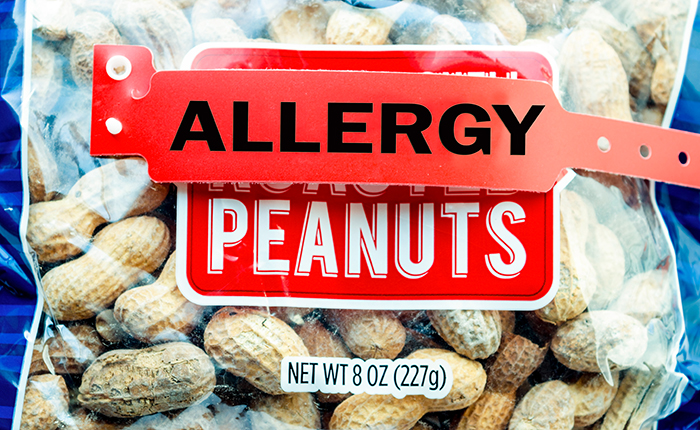Peanut Allergies? New Research Shows Promise

Food allergies send Americans to the emergency room 30,000 trips each year, according to the FDA. Peanuts, tree nuts, milk, soy, eggs, fish, and shellfish are the main culprits. And, in that crew of risk, peanut allergies stand out from the crowd.
Peanuts are believed to cause more deaths from anaphylaxis, an acute allergic reaction that may include constriction of your airways, than any other food allergy.
Two new therapies – a peanut protein powder therapy and the peanut patch – show promise in the quest to lessen that risk. “While this is encouraging, parents should know that neither therapy is a cure,” says Dr. Gary Kleiner, director of pediatric allergy and immunology services at the University of Miami Health System. “Their kids still have to avoid peanuts and carry an EpiPen. It’s the incidental exposures to trace amounts that they can protect against.”
Peanut protein powder:
This year-long clinical trial of an oral immunotherapy regimen had the goal of reducing children’s sensitivity to peanut allergens by gradually exposing them to peanut protein over the course of six months, starting with small amounts, given under medical supervision. The dosage was increased as the patient’s tolerance developed.
The results showed that after six months of treatment, followed by six months of maintenance therapy, two-thirds of the 372 children who received the treatment were able to eat the equivalent of two peanuts – without developing allergic symptoms. Children who complete the treatment need to continue to eat a peanut-free diet and may need to keep up maintenance therapy for the rest of their lives, researchers said.
Peanut patch:
This peanut patch trial also had encouraging results. At the start of the trial, the amount of peanut a child could consume before he or she had a reaction was 210 mg of peanut protein. For the people recieving the patch, it increased to an average of 900 mg a year later. The patch was well-tolerated and easy to use.
How can I minimize food allergy risk?
Dr. Kleiner says UHealth is involved in other food allergy trials and the Food Allergy Network is actively promoting the cause to get pharmaceutical companies involved in finding solutions to food allergies.
“People do not generally outgrow peanut allergies. Parents should know that their kids can lead a normal life; they just have to be vigilant and take advantage of the help that is out there.”
Prevention of food allergies by introducing potential problem foods much earlier in the child’s life.
This tactic is garnering a lot of interest. In 2017, the National Institute of Allergy and Infectious Diseases, a division of the National Institutes of Health, stated that having your child consume foods that contain peanuts early may reduce the risk for allergy.
The guidelines recommend parents and clinicians introduce peanut-containing foods to infants after they have begun consuming solid foods:
- Babies at high risk for developing peanut allergy because of a diagnosis of severe eczema or egg allergy should start eating peanut-containing foods at 4 to 6 months.
- Those at moderate risk because of mild or moderate eczema should start peanut-containing foods by 6 months.
- Babies without a diagnosis of eczema or food allergy can be introduced to peanut-containing foods at any time.
Good resources for parents, from Dr. Kleiner:
- Snack Safely
- Foodallergy.com
- Allergy eats app for smartphones
Mary Jo Blackwood, RN, MPH, is a contributing writer for UMiami Health News. Based in St. Louis, MO, and Colorado, she has written medical articles and web pages for consumer publications and major university health centers.
Tags: Dr. Gary Kleiner, food allergy, immunotherapy, peanut allergies
